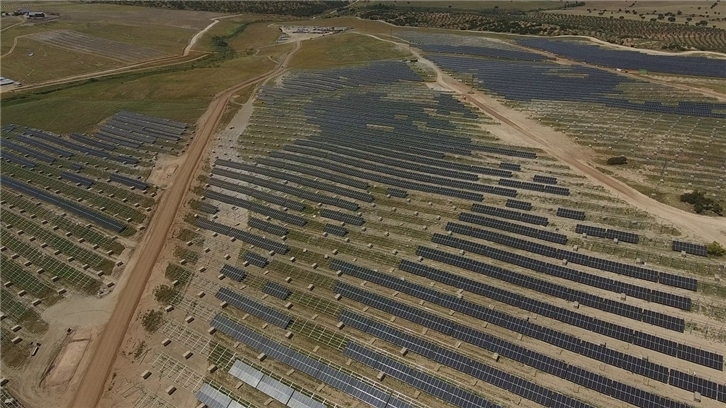Spain installs 7.2 GW of solar in 2024 amid rooftop slowdown
Spain added 7.2 GW of new solar capacity in 2024, bringing total installations to more than 40 GW, though rooftop deployment fell sharply, according to the national PV association.
October 8, 2025 Pilar Sánchez Molina

Image: Iberdrola
Share
    
From pv magazine Spain
Spain deployed 7,221 MW of new photovoltaic capacity in 2024, according to data from national solar association UNEF. The country’s total installed capacity reached 40,294 MW by the end of December.
The rooftop segment declined 31% year on year, adding 1,182 MW. Total installed capacity for self-consumption rose to 8,137 MW. “Given the current situation, achieving the 19 GW self-consumption target set by the PNIEC by 2030 is a pipe dream,” said José Donoso, UNEF’s director, during the report presentation.
In 2024, 659 active energy community projects were identified, up from an estimated 500 the previous year.
The government is preparing a Royal Decree on self-consumption that would extend the permitted distance for shared generation from 2 km to 5 km. It would also define the role of a self-consumption manager, allow surplus sharing, and enable a user to participate in multiple self-consumption arrangements.
“But we must go further. The exemption from requesting access and connection permits should be based not on installed capacity, but on what will actually be injected into the grid. We also need tax relief, as in other countries: exemption or reduction in VAT and deductions on corporate income tax for companies and personal income tax for citizens,” said Donoso. “The autonomous communities that have not yet done so must extend the exemption from administrative construction authorization to facilities under 500 kW. And connections must be expedited with incentives and penalties: it is unacceptable for industrial self-consumption projects to take months or even more than a year,” he said.
At the end of 2024, Spain’s PV sector employed 146,764 people, including direct, indirect, and induced jobs. Exports totaled €3.421 billion ($3.9 billion), down 5.7% from 2023 but still significant. Imports reached €2.037 billion, leaving a trade surplus of €1.384 billion, slightly below the previous year’s €1.512 billion.
The surplus was driven mainly by manufacturers, which exported €1.784 billion and imported €659 million, resulting in a €1.125 billion surplus. Manufacturers and developers exported €1.003 billion, imported €667 million, and recorded a €335 million surplus. Engineering and installation firms exported €233 million and imported €198 million, yielding a €34 million balance, while distributors and mixed-category firms exported €402 million, imported €513 million, and posted a €111 million deficit.
Although export volume fell from €3.628 billion in 2023, the sector maintained a strong trade balance, underscoring its international competitiveness despite a slight year-on-year decline. The manufacturing sector remained the largest contributor to GDP from exports, at €1.972 billion, down from €2.266 billion in 2023. Manufacturers and developers increased their contribution to €1.148 billion, while engineering and installation firms held steady at €291 million. The mixed category, including distributors and other activities, fell to €355 million from €408 million the previous year.
Companies in the photovoltaic industry invested €521 million in R&D&I, representing 3.78% of their revenue.
UNEF warned of a “risk of stagnation” in the coming year. “Although installed ground capacity points to a possible record in 2025, the numbers hide a complex reality for 2026,” said Donoso.
One of the most pressing challenges is the growing number of hours with zero energy prices and their technical and economic consequences. By September 2025, 693 zero-price hours had already been recorded, matching the total for all of 2024. “This phenomenon is coupled with low captured prices,” said Donoso. “The current situation of electricity prices being unstable underscores the urgency of introducing reforms to the electricity pricing system to make progress toward meeting the 2030 targets,” he added.
To address this, UNEF called for demand electrification as a national priority. Spain’s 2030 grid plan shows 75 GW of connection points already allocated, compared to an average demand of about 25 GW. UNEF said demand-based tenders would help identify viable projects
pv-magazine.com |





